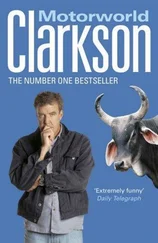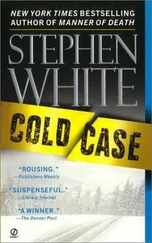There’s a lot of science in the new BMW M5. Before setting off, you can tweak the engine, the gearbox, the suspension and the seats. And it’s all very impressive. But I much prefer the approach taken by the skunkworks deep inside Merc’s special forces division, AMG. Which is: no science at all.
Recently AMG’s cars have started to become a bit soft. The raw, visceral engines have been muted with turbochargers to keep the emissions down, and the standard automatic gearboxes have been replaced with flappy-paddle-operated manuals that work just fine on the open road but with an epileptic jerkiness in town.
AMG says that the new C 63 Black Series is softer, too. It says it’s listened to criticism – from me mostly – that the old CLK Black was too hard for the real world and that the new model is kinder to your spine.
Well, you could have fooled me. It’s like being inside a fridge-freezer that’s tumbling end over end down the side of a rocky escarpment. Is it softer than the old car? Perhaps, but not in a way that the human bottom could ever detect.
It even looks more racy. Like the old car it has flared wheelarches to accommodate the wide track, but in addition there are now nostrils in the bonnet and, if you tick the right option boxes, all sorts of carbon-fibre winglets designed to show other traffic that you are in agony.
Of course, you may think that all of this is necessary and important at the track. You can even specify the new car with timers that measure your performance not only against previous laps, but also against professional racers. However, it’s all a complete waste of time because on a track this car is not an M5. It is not designed to post the best possible lap time. It is designed purely and simply to eat its own tyres. I got through one set in just fifteen minutes.
This hunger for rubber is caused by the engine. It hasn’t been softened, which means you get 6.2 litres of basic, unturbocharged power and torque. The diff may come from the sort of engineering that’s used to open lock gates and the chassis from a book called How Victorians Did Things , but none of it can cope with that V8 firepower.
Drive with the traction control on and you won’t go anywhere at all. Drive with it off and you will go everywhere sideways. This, then, is my sort of car. It’s almost childlike in its honesty.
And here’s the best bit. Despite the madness, it is not a stripped-out racing car. Unlike Porsche, which removes even the satnav and the radio from its track cars and replaces the back seats with scaffolding, Mercedes has left pretty much everything you could reasonably expect in place. It will even, if you ask nicely and cross its palms with silver, put the rear seats back.
If you learn, as I have with my Black, to steer round manhole covers and potholes, you can use the car on a day-to-day basis. It has iPod connectivity. It has air-conditioning. It has a boot. You just have to remember that at no point, on the road, can you ever use full throttle. Unless you’ve just found your wife in bed with your mother, you’ve lost your job and your kids have been arrested.
This car is unique. It’s something that’s not made any more and will probably – because of the world’s poor grasp of science – never be made again. On the face of it, it’s a German DTM racer, a road rocket from the country that invented such things. But, deep down, it’s on Telegraph Road, eight miles north of Detroit, on a Saturday night, with its cap on back to front and a bottle of Coors in its big, working-class paw. Deep down, it’s a muscle car.
And Prince Charles will like this. Sometimes it can also be a muscle relaxant.
27 November 2011
It’s no cruiser but it can doggy-paddle
Jeep Grand Cherokee 3.0 CRD V6 Overland
Last weekend AA Gill wrote about New York in such glowing terms that I wanted to drop what I was doing and go there immediately. He admitted, of course, that in summer the humidity makes the sky feel as thick as wallpaper paste and in winter it turns slate grey and comes right down to the ground, blotting out the city’s raison d’être. But he talked of an autumn day when there’s a crimson tide in Central Park and the sky appears to have been bleached, perhaps sucked of its richness by the vibrancy of the people below.
I would agree with Adrian that New York is one of the world’s greatest cities. Along with, in no particular order, San Francisco, Rome, Tokyo and Cape Town. But last weekend, after much quiet contemplation, I decided that none of them can hold a candle to what is unquestionably the best of them all: London.
I came to this conclusion because I was working at the ExCeL exhibition centre, which is located about 6,000 miles to the east of the City, near where they are holding the running and jumping competitions next year.
Boris Johnson will tell you that the best way of getting there is by the Sustainable Light Railway. But he’s wrong. The best way of getting there is via the Thames, on a Fairline Targa 47 luxury yacht.
I should make it plain from the outset that it is extremely difficult to drive a boat through the middle of London. The civil engineer Joseph Bazalgette made sure of that, separating what at the time was an open sewer from the City with the Thames Embankment. And today the authorities keep his spirit alive with an astonishingly well thought-out plan to make absolutely certain that no private individual can park their boat even for a moment, at any point, anywhere at all. You can come, but you must go away again straight away.
Two years ago the Port of London Authority introduced a 12-knot speed limit on parts of the river and I’m not surprised, really, because out there in the chop, among the pleasure boats and the barges, which are operated by men who live by rules laid down in the 19th century, you feel completely at sea. Taking a pleasure boat into this alien world full of people who make a living there is like riding a tricycle along the Central Line. It’s going to end up with a crash. Despite all this, you must try it. It is No 1 in the things you have to do before you die. Wait for a crisp autumn day when there isn’t a cloud in the sky and go through the middle of London on a boat. And then you will realize why nowhere else gets close.
It’s the variety, really. New York is a monoculture. It does one thing. So is San Francisco. And so is Rome. London, though, is different. You have the Tower, which is almost a thousand years old, right next to the brand new glass-and-steel cathedrals to capitalism. You peep past converted 19th-century warehouses to catch a glimpse of a 17th-century cathedral. And then it’s eyes left for the Palace of Westminster and eyes right for the London Eye. Pretty soon your head is rotating like that little girl’s in The Exorcist and you’re wishing you had compound vision like a fly.
One minute you are gliding past HMS Belfast , a second world war battle cruiser, and no sooner have you taken stock of its rear end than it’s time to swivel round and gawp at London’s signature dish – Tower Bridge. It’s not a river cruise, really; it’s time travel.
And I’m willing to bet that there’s no other city in the world where anyone would point excitedly at a power station. But that’s what you do in Battersea.
However, it’s the return journey, at night, that leaves you breathless. Many cities tart themselves up for one-off events. London looks like it’s New Year’s Eve all the time. It is lit absolutely beautifully. From the laser marking the meridian at Greenwich, up past Canary Wharf and under the blue-white lighting at Tower Bridge, you arrive once more at Westminster, where the clock tower is a warm blend of vivid green and sodium orange, and, opposite, the London Eye appears to be a portal into space. There was even a gorgeous new moon to top the scene off.
Читать дальше












